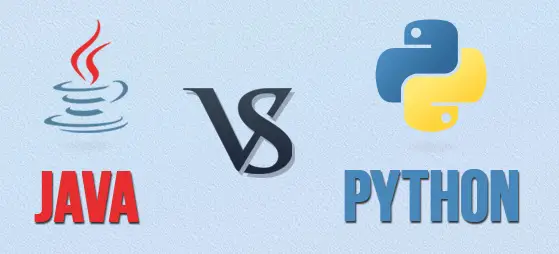Programming Languages are an essential piece of computer science; they are elementary tools in a programmer’s toolkit and vital to nearly every programming activity. Do you know there are even websites which can help you with your assignments? Find a good programmer and get your job done! In this plenitude of programming languages reigning the IT globe, there are two hottest names that are combating against each other and are experiencing serious comparison – Python vs Java! Yes! So, which programming language will continue to be in demand in 2020 and beyond? This scenario is a brief comparison making your selection smooth and easy. Let us go through the intricate details of both, to understand them better.

Java vs Python
Java is a high-level programming language that is analogous to C++, but it is strongly a program-oriented language. It is dynamically linked, which enables new code to be downloaded and run, but not dynamically typed. Python is a multi-purpose, dynamic programming language which is readable and efficacious with automated memory management. It has even amazing real world applications.
Below are the parameters to consider for a comparison between Java and Python.
Popularity
Popularity has consistently been a top game between these two languages. Java was in the first position for a long duration until the company introduced JavaScript. In Stackoverflow’s 2018 survey of developers, Python was crowned as the quickest-growing programming language. Java was addressed as a popular choice by several developers, albeit the gap between both languages has declined considerably.
Syntax
Python is an immensely dynamic language. Whilst typing, the developer doesn’t need to input the variables. These are entered during the runtime which makes Python an easy and simple language. Another aspect is that it does not use indentation rules or enclosing braces. This case drives the code basic and plain to read. Java is directly opposite in this context. It has very severe syntax rules, where you require to type in all the variables, and if there is an error or anomaly in the code, the program won’t run.
Speed
As Python is checked generally during the runtime, a single issue with the program can have the entire application on hold. Each and every variable altogether has resulted in decreased efficacy and speed of the language. Java is quicker than Python since it is a compiled language. It needs much shorter time to perform a code.
Machine Learning
Python started the adaptation of machine learning by several entities. It is just because of its enormous library and resources that are being acquiesced and advanced further more. Java is also studied as an alternative by several people. With features like simple debugging and usage, it is executed for wide-scale operations and corporate-level programs. Amongst the libraries, you could apply in that areas are Weka, Mallet, DeepLearning4, and MOA.
Game Development
JMonkeyEngine is a famous open access game development engine with Java, albeit it’s not on the same level with Unreal and Unity but it is definitely a mighty engine that will assist you to build few fantastic games. If you want to test with computer graphics from scratch or develop your own engine, OpenGL also renders bindings for the Java language. On the contrary, Python is not way too beneficial to run games on it, but there are several engines such as Panda3d, Cocos, Pygame, and so on that run on Python only. Python isn’t a language that is entirely shut out of game development, and it can be utilized as a tool.
Web Development
Both languages are applied in backend web development. Backend web development is the division of web development focused on building the software that will run on the server. The two most famous engines for Python are ‘Django’ and ‘Flask’. Referring to Java, ‘Spring’ is probably the most widely-known Java backend framework with a vast ecosystem and an enormous community surrounding it. While it’s not as trending as Django currently but it is a strong option for building enterprise-level applications.
IS THE FUTURE WITH JAVA (coffee) OR PYTHON (snake)?
Having taken into account both languages against many parameters, Python has a slight edge over Java and wins the combat in most of the aspects. But all goes down on what you plan to concoct and where you wish to reach with your new expertise. Java may be a more prevailing option, but Python is broadly used. Python has been trending high for the upcoming years too and exhibits plenty of potentials to beat Java in the Numero-uno race. However, if you are newbie to foray into development, it’d be better to stick with Python. Java is also competent enough to restore its position and manage its supremacy through its Java app development services. Let’s see! It will be interesting to witness who surpasses whom! Whoever it is, the developers are definitely in for a treat!
The post Python vs Java – Which Programming Language is Ruling in 2020 appeared first on The Crazy Programmer.
from The Crazy Programmer https://ift.tt/2VCnEGm
Comments
Post a Comment